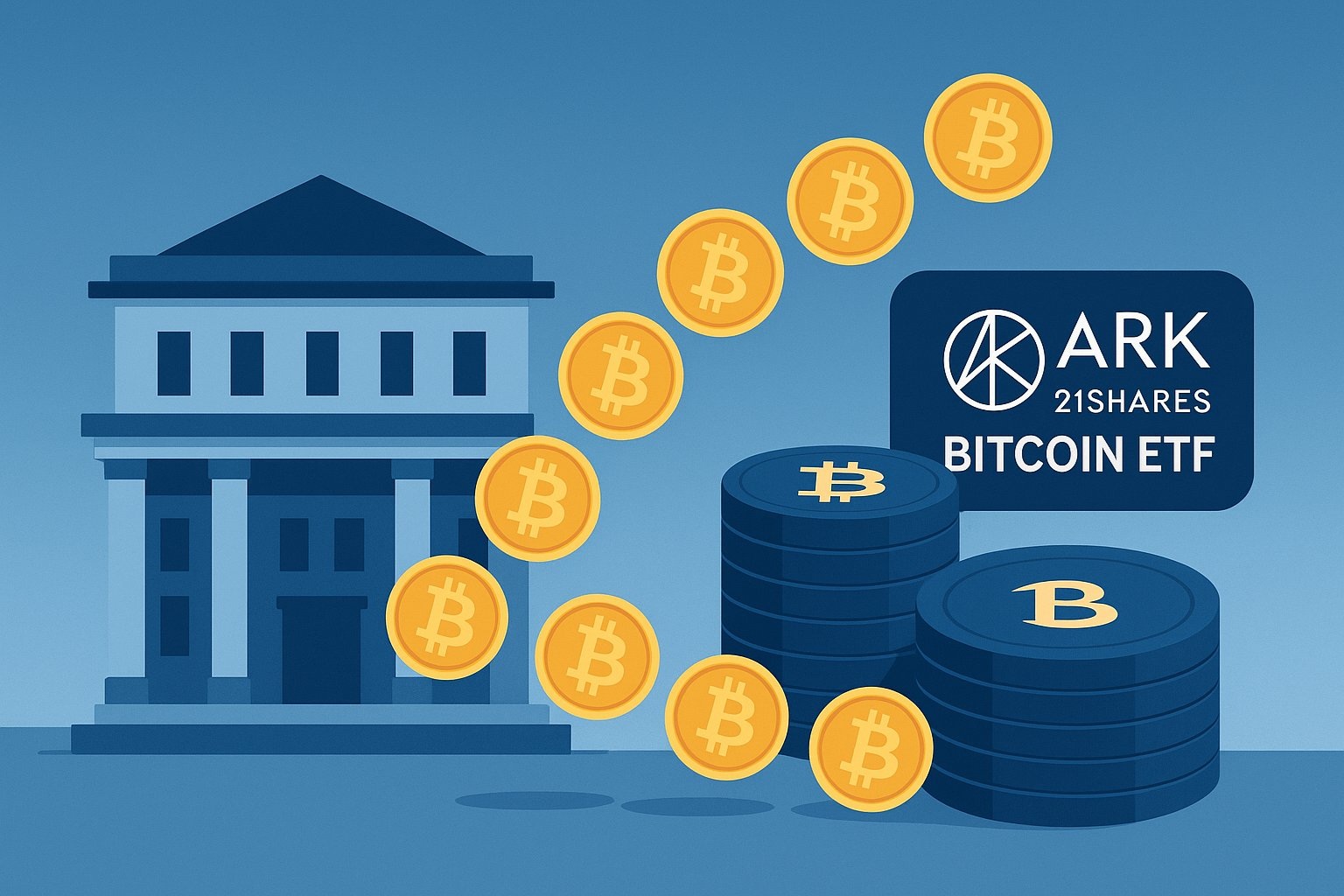Retirement Plans’ Growing Interest in Tokenized Assets, Exemplified By Michigan’s AKRB Bitcoin ETF Exposure

The State of Michigan Retirement System significantly increased its Bitcoin exposure in Q2 2025, tripling its holdings in the ARK 21Shares Bitcoin ETF (ARKB) from 100,000 to 300,000 shares, valued at approximately $11.4 million as of June 30, according to SEC filings. The fund also maintains 460,000 shares in the Grayscale Ethereum Trust (ETHE), worth about $9.6 million, unchanged since September 2024.
This move reflects growing institutional confidence in digital assets, despite recent Bitcoin ETF outflows totaling $1.4 billion over four days. Michigan’s strategy aligns with a broader trend, as seen with Wisconsin’s $387.3 million Bitcoin ETF position, signaling cautious but increasing adoption among state pension funds.
Tokenized assets, such as Bitcoin ETFs or tokenized real estate and private equity, allow fractional ownership, lowering barriers to entry for retail and institutional investors. This enables retirement plans to offer exposure to high-value or illiquid assets previously reserved for high-net-worth individuals or institutional investors, like private equity or real estate.
Register for Tekedia Mini-MBA edition 18 (Sep 15 – Dec 6, 2025) today for early bird discounts. Do annual for access to Blucera.com.
Tekedia AI in Business Masterclass opens registrations.
Join Tekedia Capital Syndicate and co-invest in great global startups.
Register for Tekedia AI Lab: From Technical Design to Deployment.
Traditionally illiquid assets, such as private equity or infrastructure, gain liquidity through tokenization. Retirement plans can rebalance portfolios more dynamically, meeting cash flow needs without sacrificing long-term returns. For instance, tokenized real estate allows pension funds to exit portions of investments rather than entire holdings, addressing liquidity constraints.
Blockchain-based tokenization reduces intermediaries through smart contracts, lowering transaction and administrative costs. For large pension funds like Michigan’s, this can translate into significant savings, potentially reducing fees passed on to retirees.
Blockchain’s immutable ledger provides a transparent, traceable record of transactions, reducing fraud risks and enhancing regulatory compliance. This is particularly appealing for pension funds, which prioritize fiduciary responsibility and accountability. The lack of consistent global frameworks creates fragmentation.
Cryptocurrencies like Bitcoin, even in ETF form, are volatile, posing risks to retirement funds that prioritize stability. The recent $1.4 billion in Bitcoin ETF outflows highlights market fluctuations. Many retirement plans lack the technological expertise or infrastructure to manage blockchain-based assets, requiring costly upgrades.
Tokenized assets are vulnerable to hacks or smart contract errors, necessitating robust security measures. The inclusion of high-risk assets like cryptocurrencies in retirement plans, as enabled by recent U.S. executive actions, raises fiduciary concerns. Plans must balance potential returns with the need to protect retirees from undue risk, especially given warnings about private equity and crypto being diverted into 401(k)s without clear investor consent.
However, limited market liquidity and immature secondary markets could hinder scalability. Following Michigan’s lead, retirement plans are increasingly allocating to Bitcoin and Ethereum ETFs. Wisconsin’s $387.3 million Bitcoin ETF position and Michigan’s $11.4 million ARK 21Shares Bitcoin ETF holdings reflect this trend.
Tokenized money market funds have surpassed $1 billion in assets under management in 2024, driven by high-interest-rate environments. Major players like BlackRock, WisdomTree, and Franklin Templeton offer these funds, which provide instant settlement and can be used for payments, enhancing capital efficiency. Retirement plans are exploring these for stable, on-chain returns.
Pension funds are testing tokenized real estate and private equity to diversify portfolios and access illiquid markets. For example, tokenized real estate allows fractional ownership of properties, enabling pension funds to invest globally without large capital commitments. Goldman Sachs is launching tokenization projects for U.S. fund complexes and European debt markets by late 2024, signaling institutional interest.
Retirement plans are eyeing tokenized bonds and equities for faster settlement and lower costs. Slovenia’s issuance of a digital bond in 2024 and Switzerland’s Helvetia III project for tokenized bond settlements using wholesale CBDCs are notable examples. These offer pension funds efficient, transparent investment options.
A U.S. executive order signed on August 7, 2025, directs the Department of Labor to review fiduciary guidance, paving the way for cryptocurrencies and private equity in 401(k) plans. BlackRock’s planned 401(k) target-date fund with 5-20% private investments and Empower’s collaboration with Apollo reflect this shift, though it introduces risks for retail investors.
The tokenized asset market is projected to grow significantly, with estimates ranging from $2 trillion by 2030 (McKinsey) to $16 trillion (Boston Consulting Group). PwC forecasts tokenized investment funds reaching $317 billion by 2028. Retirement plans are aligning with this trend, with 74% of institutional investors planning to invest in digital assets within five years, per a 2024 Fidelity survey.
Trends like tokenized money market funds, real estate, and digital bonds are gaining traction, supported by regulatory sandboxes and institutional pilots. As the market matures, retirement plans must balance innovation with fiduciary duty to ensure long-term stability for retirees.

